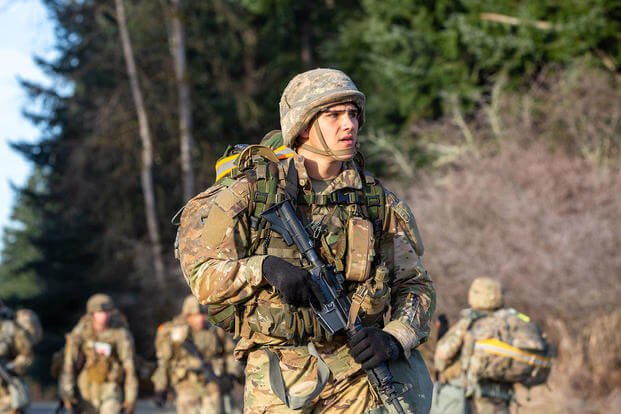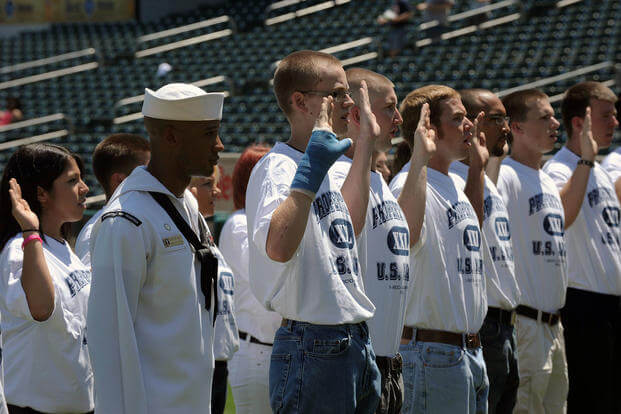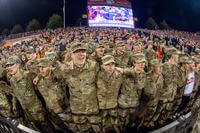Joining the military is a career choice that should not be taken lightly. It requires work and preparation, as it is fairly competitive these days. Even during times of war, there is a steady flow of brave Americans seeking to serve in the armed forces.
Also, joining will be a source of pride for the rest of your life. You want to get it right the first time and not attempt challenging programs unprepared.
Here is a typical question from high school students seeking help with their preparation for the physical fitness standards of the Marines:
Stew -- I am a high school senior and will be joining the Marine Corps after I graduate in June. I am starting to prepare now and need help with pull-ups and running. I have just started both and could stand to lose 15-20 pounds. Do you have any advice for a quick transition by the time I DEP (Delayed Entry Program) into the military? Tim
Tim -- I admire and thank you for your decision to want to serve your country and push yourself to become a Marine. But most importantly, do not set a deadline in your head for when you have to enlist. You do not have to see a recruiter immediately after high school. Wait until you are ready. If you cannot pass the fitness test, you are not ready.
Here is my advice:
1. Go to the recruiter when you are ready to pass the fitness standards: Do not start the paperwork rolling until you can master the fitness test (pull-ups, crunches, three-mile run) for the Physical Fitness Test (PFT). You will start out with the Initial Strength Test (IST), which consists of pull-ups, crunches and a 1.5-mile run.
This should be an easy test for you, with plenty of practice tests self-administered months in advance. Taking a fitness test for the first time in front of a recruiter is not a good idea. Consider the first time you take a fitness test with a recruiter as a job interview.
After that IST, you will be categorized into the pass group or the fail group. That is not a good first impression if you fail on day one. You will be expected to improve, or you do not go into the Marines.
2. The same goes for other services, especially special-ops candidates: Do not even talk to a recruiter until you have self-tested and can pass the minimum standards easily. Do your homework and figure out what these standards are for your branch. The minimum standards are there for a reason, but if you want a better chance of not getting injured and of graduating any of the special-ops jobs, you will want to be well above minimums on the first fitness test.

3. Once you build your running, add rucking: If going for the Marines, Army or other special-ops programs, you will need to ruck. That means moving fast with 50+ pounds on your back in a backpack. This, too, builds up over time. And it takes time, more than you currently are giving yourself.
To answer your question specifically, check out the list of articles on the topics you need help with: a progressive running plan and a good PT/weight training routine.
Learn How to Take the PFT: Learn about the transitions from one exercise to the other.
Pull-ups: Weight loss will help with your pull-ups. Running, biking, more exercise and better nutrition will help with your weight loss..
Running: As an overweight beginner, you may want to mix in some non-impact cardio options on days between running for the first month or two, such as biking, elliptical, rowing or swimming. Strive for 30-40 minutes on those non-impact workouts and work your heart and lungs by mixing in intervals (fast/slow minutes) into your time of training. Here's how to Take 2:00 Off Your PFT Mile.
Rucking: Eventually, once you build a decent running base of 15 miles a week or more, start to add in rucking 1-2 days a week and progress with mileage and weight, as you did with running each week.
Too many times, people set self-imposed deadlines, regardless of whether they are prepared adequately or not. If you DEP in too soon, it could ruin the chances of you getting what you want (special-ops jobs) or even joining the branch of service you seek at all.
The number one reason why people are not eligible to serve in our military is failing to meet the height/weight standards or physical fitness standards. You can get in killer shape. Just give yourself time to do so.
Stew Smith is a former Navy SEAL and fitness author certified as a Strength and Conditioning Specialist (CSCS) with the National Strength and Conditioning Association. Visit his Fitness eBook store if you're looking to start a workout program to create a healthy lifestyle. Send your fitness questions to stew@stewsmith.com.
Want to Learn More About Military Life?
Whether you're thinking of joining the military, looking for fitness and basic training tips, or keeping up with military life and benefits, Military.com has you covered. Subscribe to Military.com to have military news, updates and resources delivered directly to your inbox.




















